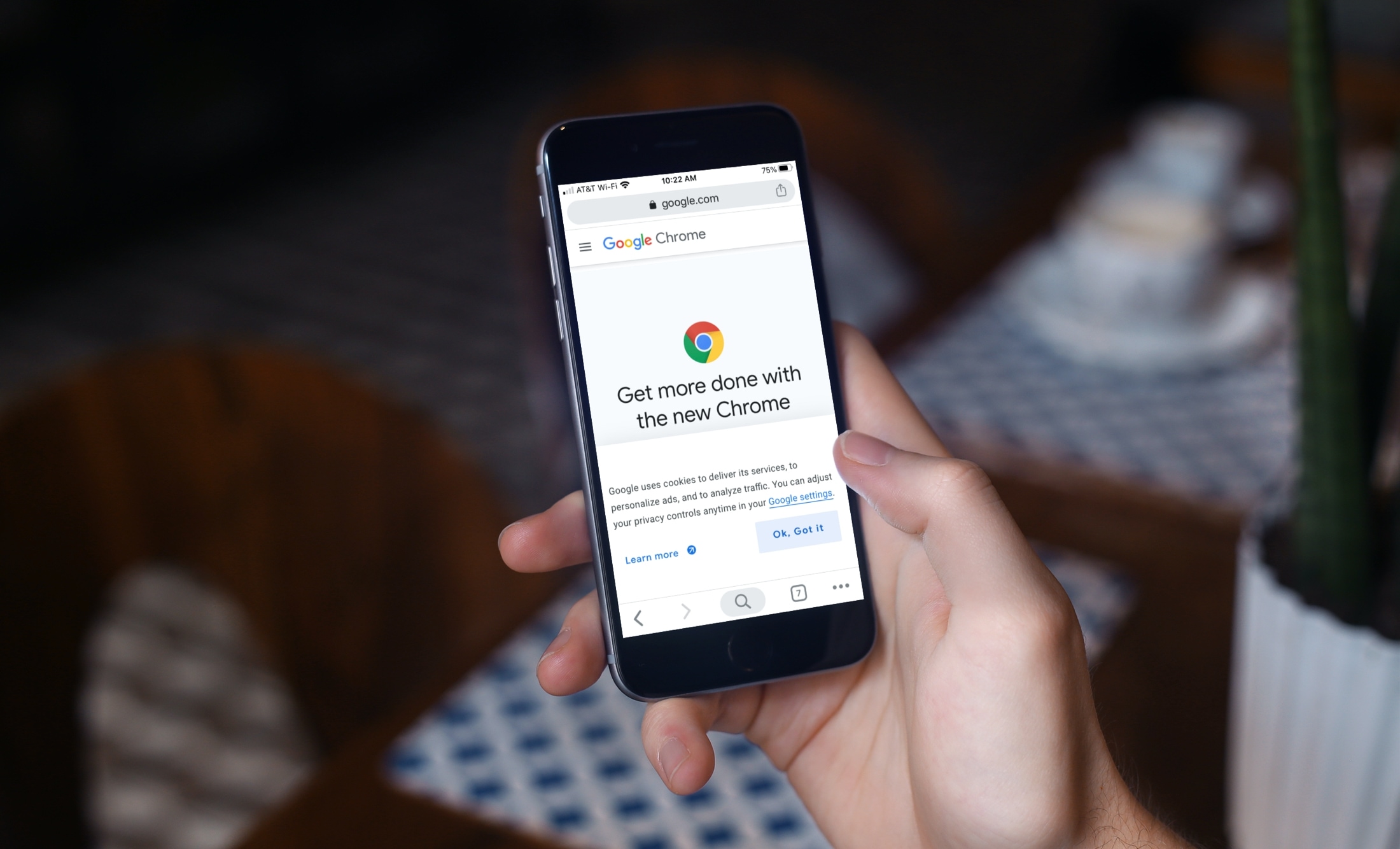These tips will supercharge your iPhone web browsing experience in Google Chrome with custom settings for URL bar location, tab groups, and more.

Many iPhone owners fire up Safari whenever they feel like surfing the web. But if you prefer Google Chrome instead or are thinking about giving it a try, then these Chrome productivity tips are for you.
Stop seeing news stories
To turn off those clickbait news headlines on Chrome’s start page, hit your profile picture in the app, choose Settings, and turn off the Discover & Following switch. To stop seeing Chrome’s tips and small cards on the start page, swipe left on them and touch the settings icon to manage them.

Move the address bar to the bottom
To use a bottom address bar in Chrome for one-handed operation, go to in-app settings, tap Address Bar, and choose Bottom.

Sync Chrome with other devices
Chrome will prompt you to sign in on first run. To do this later, tap the profile placeholder in the top-right and sign in with your Google account. Once signed in, hit your profile picture and select your name to choose items to sync, like your browsing history, open tabs, your bookmarks, passwords, settings, and more.

Rearrange or pin tabs
With many open tabs, Chrome will move the old ones to the to; to rearrange your tabs manually, touch and hold a tab to move it to a different spot. You’ll also see an option to pin a tab for quick access.

Use tab groups
Safari has tab groups, and so does Chrome. This feature enables you to organize open tabs into groups. For example, you may want to group your work tabs separately from your personal tabs.
- Open Chrome’s tabs screen, touch and hold any tab, and choose Add Tab to New Group.
- Name your tab group, then hit Create Group.
- Click the all tabs icon at the top (it resembles four squares) to view your tab groups.
- To add the current webpage to a tab group, touch and hold its tab and choose Add Tab to Group.

Close all tabs in one go
Hit the tabs icon in the tab area at the bottom to view your open tabs, then touch and hold the Edit button and choose Close All Tabs and Groups.

See recently closed and cloud tabs
Tap the menu button (…) and select Recent Tabs to reopen a tab closed by mistake. The same option displays your open tabs from other devices, like your Mac, that are signed in with the same Google account in Chrome.

Change the default search engine
Google is Chrome’s default search engine, but you can change it to Microsoft Bing, Yahoo, DuckDuckGO, Yandex, or a custom site in Chrome’s in-app settings.
Browse the web privately
Hit the glasses with a hat icon on the tabs screen to enter Chrome’s Incognito mode which doesn’t save visited webpages to your history. For extra privacy, lock your private tabs behind biometrics to keep them safe if someone gets hold of your unlocked iPhone.

Request a website’s desktop version
If a website offers additional functionality or works better in desktop mode, tap the three-dotted menu icon and select Request Desktop Site. When in this mode, double-tap anywhere to use smart zoom. Repeat this gesture to return to the mobile version.

Access your passwords
Google Password Manager securely stores login details like usernames, passwords, and passkeys. To access them in Chrome, hit your profile picture and select Password Manager. Tap any saved entry to reveal the username and password.

Also see: How to set Google Chrome to autofill passwords anywhere on your iPhone
Translate pages
Chrome can translate webpages out of the box. When you encounter a webpage in a foreign language, tap the three-dotted button, choose Translate from the menu, and hit the cog gear icon to set a desired language.

Related: How to translate a page in Safari on iPhone, iPad, and Mac
View your bookmarks, history, and reading list
The three-dotted menu lets you access your browsing history, reading list, and saved bookmarks.
- Bookmarks: View, search, edit, and create folders for your bookmarks.
- Reading List: Access and edit your Chrome reading list.
- History: View, search, edit, and clear your web history.
Take advantage of voice search
Chrome’s built-in voice search springs into action when you hit the microphone in the search box. You can also turn on Voice Search > Speak Answers Back in the in-app settings to have Chrome speak aloud the top search result, which is a nifty feature.
When viewing a webpage, tap and hold the back arrow or forward arrow at the bottom to view other visited pages or use the New Tab option at the top to open a new tab.

Change the protection level
Chrome has three levels of protection, with the standard level selected by default. To choose a different protection level, go to Chrome Settings > Privacy and Security > Safe Browsing.
Set Chrome as your default web browser
Safari is the default web browser on all Apple devices, but you can set Chrome to take its place. Now any links you tap will open in Chrome instead of Safari.
Turn off inactive tabs
Safari can automatically close old tabs, but Chrome takes a different approach. By default, any tabs not viewed for 21 days are moved to the Inactive section. To set the cutoff period to 7 or 14 days (or turn this feature off), open Chrome’s in-app settings, navigate to Tabs > Inactive, and pick an option.
Do you have any other Chrome tips for iOS you’d like to add? Leave a comment below!
Check out next: How to import and export bookmarks between Safari, Firefox, and Chrome on Mac